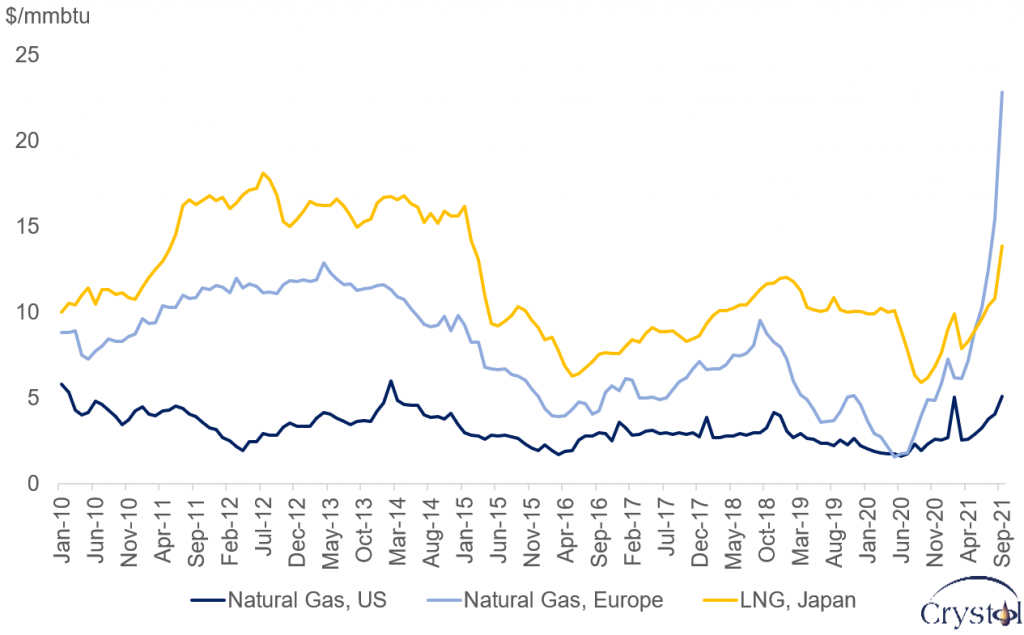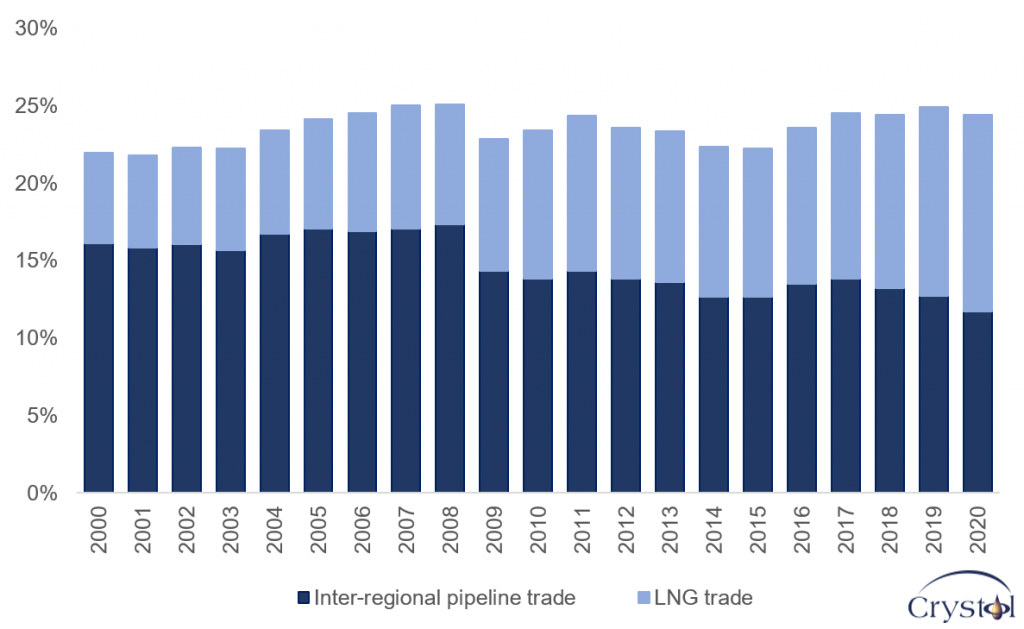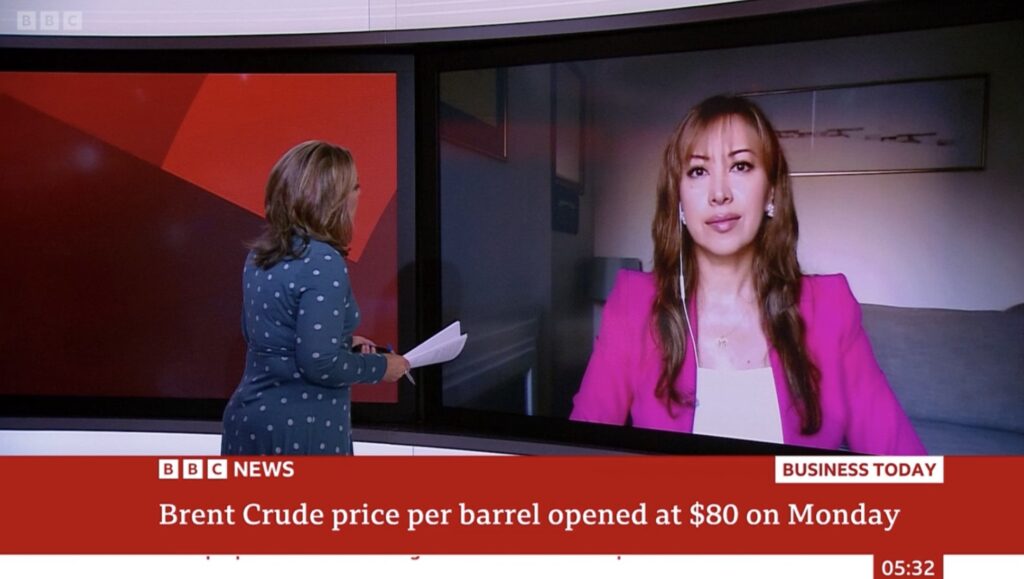Dr Carole Nakhle
It is hard to imagine that natural gas was once an unwanted fuel. “What is worse than finding a dry hole? A gas discovery!” – early oil explorers reportedly quipped. Even today, around 142 billion cubic meters (bcm) of natural gas (or 4 percent of world consumption) is flared globally. But Europe is facing a harsh gas crisis. Compared to a year ago, the market price for gas has increased by 600 percent this September.
Monthly gas prices in key markets

Data Source: World Bank, 2021
It would be simplistic to attribute the current situation to a single factor. On the contrary, there are many reasons for the increase, though the political angle has attracted the most media attention. Furthermore, only some of these forces have emerged during the Covid-19 pandemic. Others have been much longer in the making.
The crisis will eventually be resolved, but its ramifications will go well beyond Europe and gas markets. The transition toward a greener energy system may be affected: high costs and charges could provoke a backlash against carbon-cutting initiatives.
Evolution of global gas trade (share of production)

Data Source: BP, 2021
Policymakers should have been better prepared for this dilemma. For the energy transition to accelerate, fossil fuels need to become more expensive to encourage substitution. But if a cheaper, greener, alternative is not readily available (for example, wind generation capacity in Europe was too low to compensate this year), nations will resort to other means to avoid a major energy meltdown.
The article was first published by the Geopolitical Intelligence Services
To request a copy, contact us on [email protected]
Related Analysis
“An Energy Crisis Like No Other“, Lord Howell, Oct 2021
Related Comments
“Oil demand recovery and gas price spikes“, Christof Rühl, Sep 2021
“Gas crisis hits the European Union“, Dr Carole Nakhle, Sep 2021








